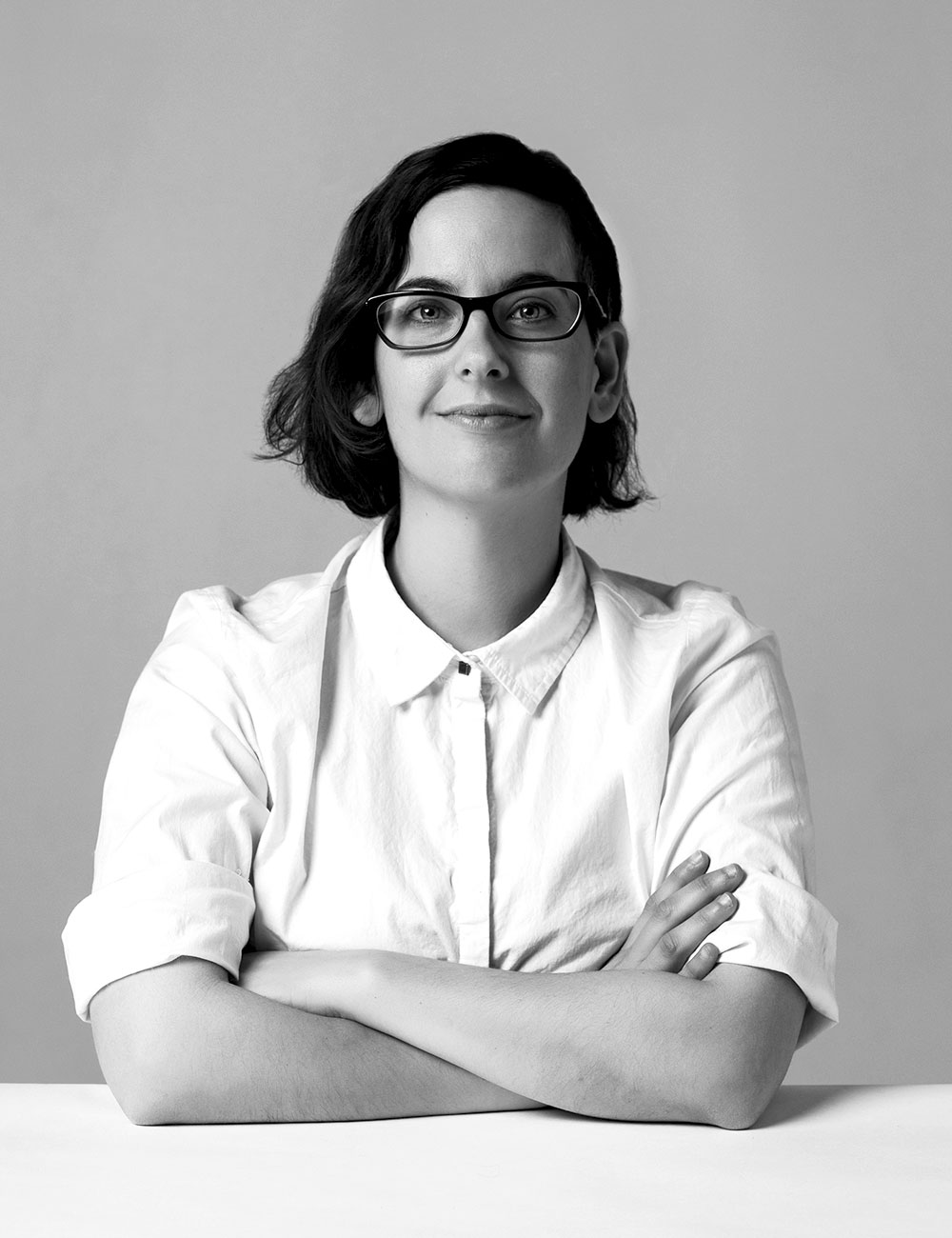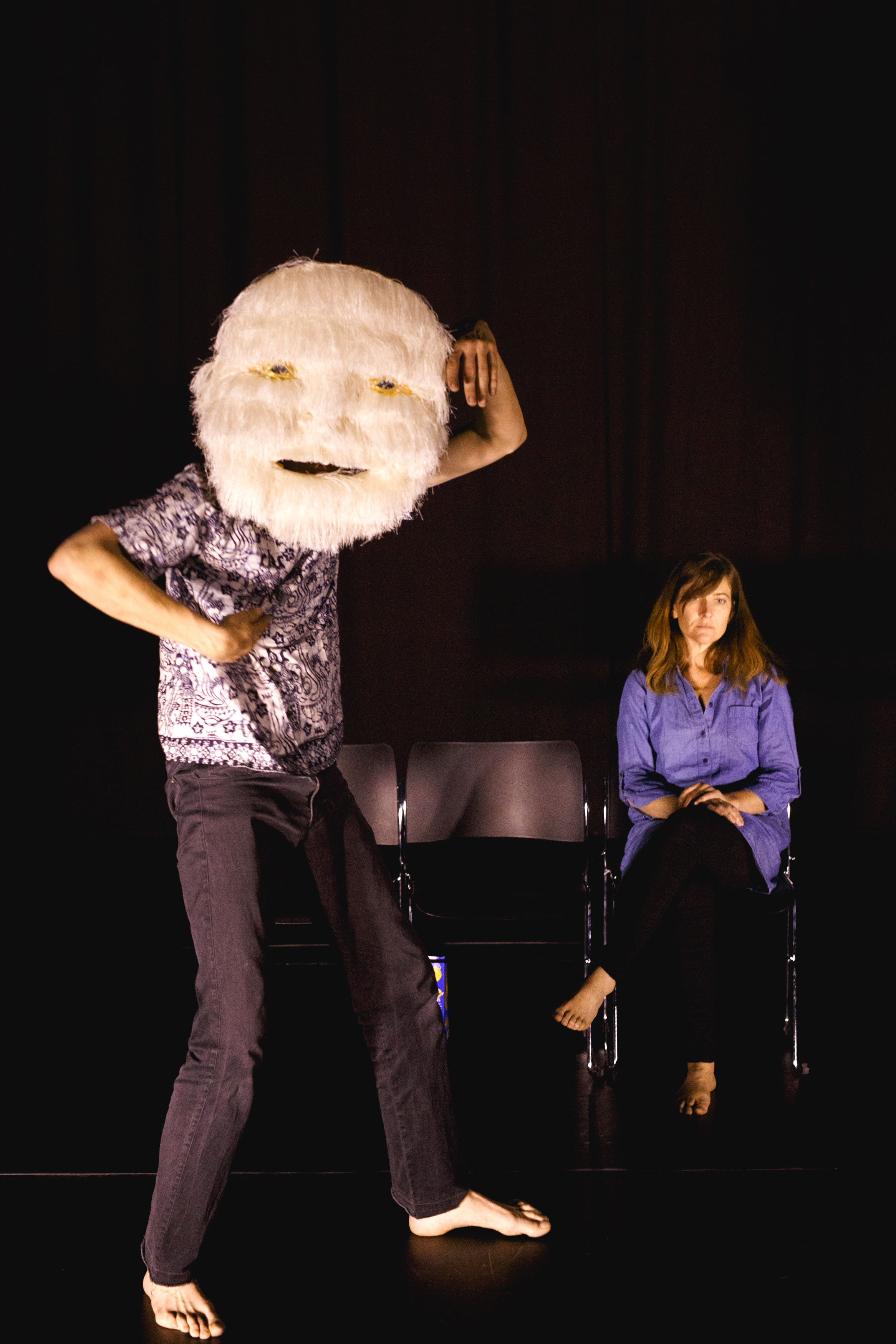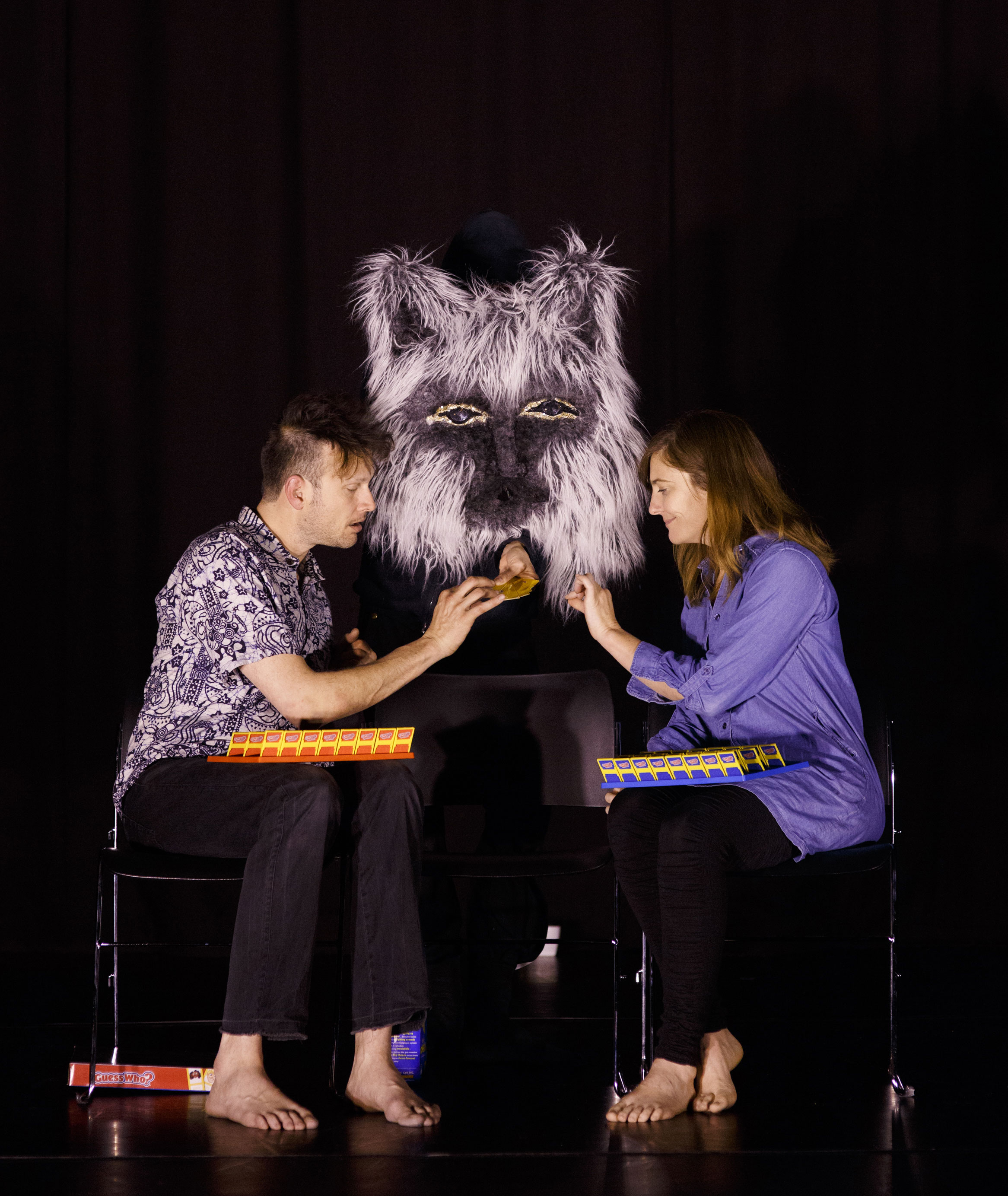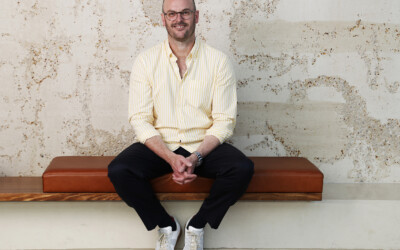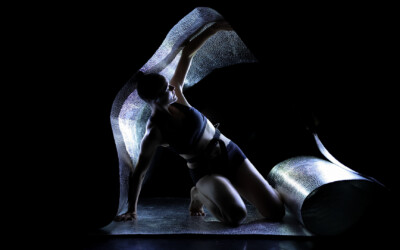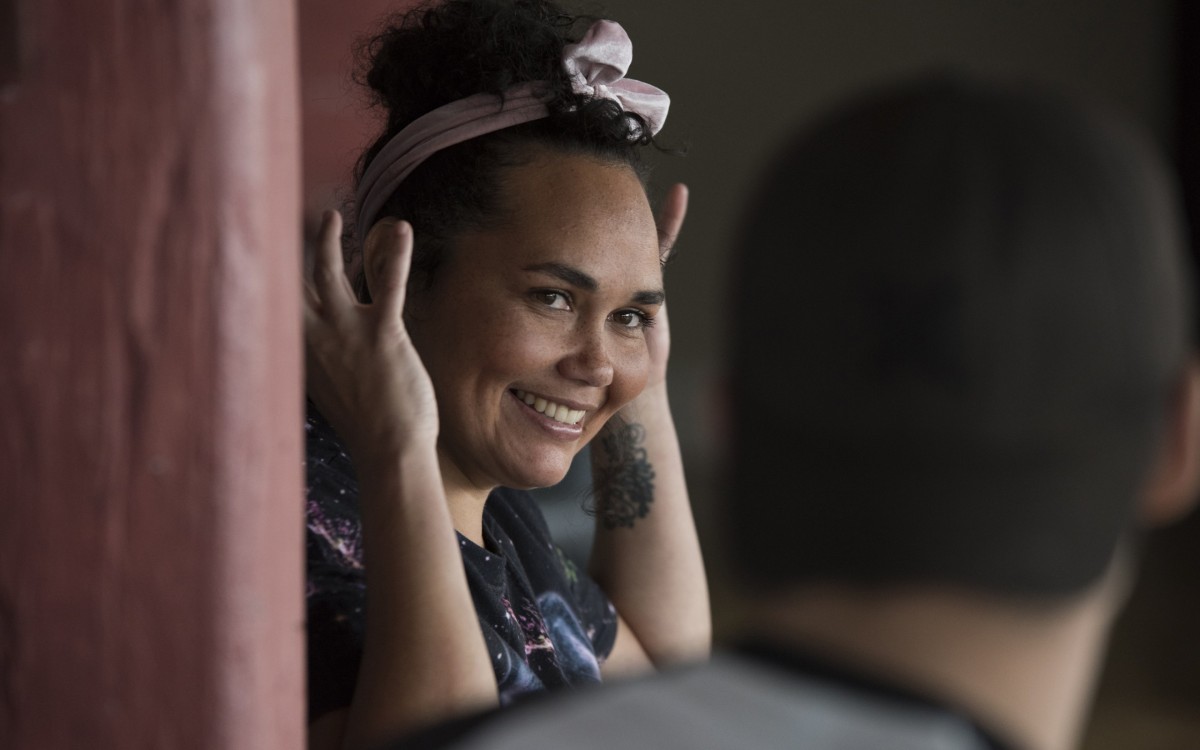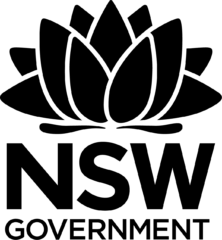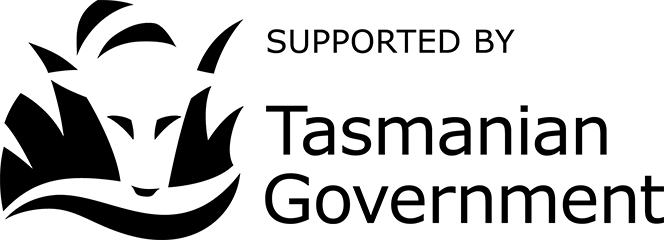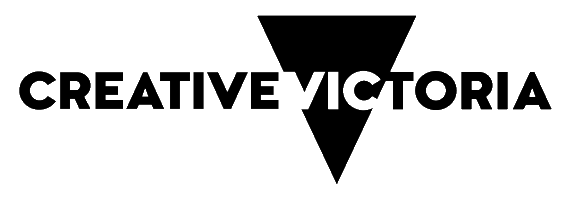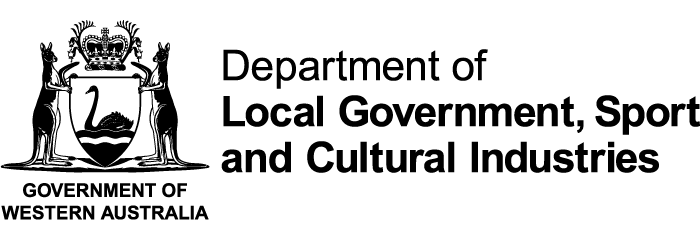Following two weeks of creative development, director Katt Osborne and multidisciplinary artist Tarryn Gill recently presented a series of vignettes from their new work-in-development, Unheimlich.
Set in the intimacy of the home, the piece explores how our innermost thoughts and subconscious can affect our relationships, as the mundane and repetitive slowly become toxic. The interaction between performers and Tarryn’s giant masks creates an immersive, surreal, dark and whimsical world. The work reveals how the ego and the heart can fight with each other, bringing our darkest emotions to light.
Our Marketing Coordinator, Cecile Lucas stayed after the showing to ask some burning questions to director Katt Osborne.
